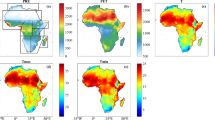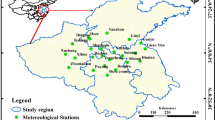Summary
Seasonal summer monsoon (June through August) rainfall patterns over South Korea are classified by an objective method using data for a 40-year period (1961–2000). The rainfall patterns are represented by the percentage departures from the normal rainfall of 12 stations spread uniformly over South Korea. The statistical technique employed is the k-means (KM) clustering method. The Euclidean distance has been used as a measure of similarity between the patterns.
Four dominant types are obtained by this method. Intercorrelations among the types suggest that the dominant patterns are distinct. The summer monsoon rainfall shows an increasing trend. Investigation of the physical processes associated with these patterns using NCEP/NCAR Reanalysis data clearly reveals contrasting circulation features associated with the dominant types during the summer monsoon period. In particular, contrasting circulation features are related to the position, shape and strength of the North Pacific Subtropical High.
Similar content being viewed by others
Author information
Authors and Affiliations
Additional information
Received October 30, 2000 Revised November 12, 2001
Rights and permissions
About this article
Cite this article
Kim, BJ., Kripalani, R., Oh, JH. et al. Summer monsoon rainfall patterns over South Korea and associated circulation features. Theor Appl Climatol 72, 65–74 (2002). https://doi.org/10.1007/s007040200013
Issue Date:
DOI: https://doi.org/10.1007/s007040200013




